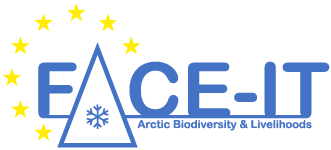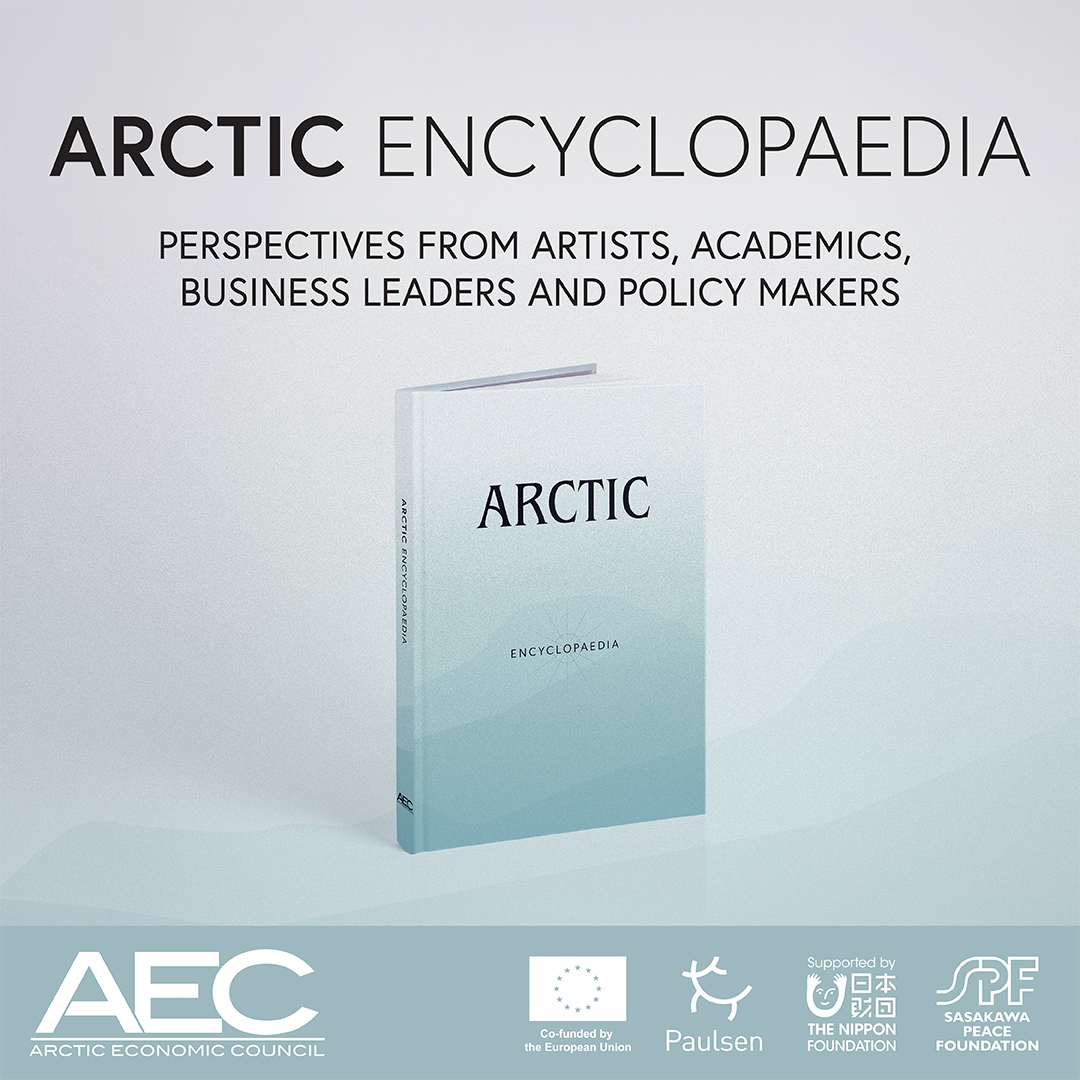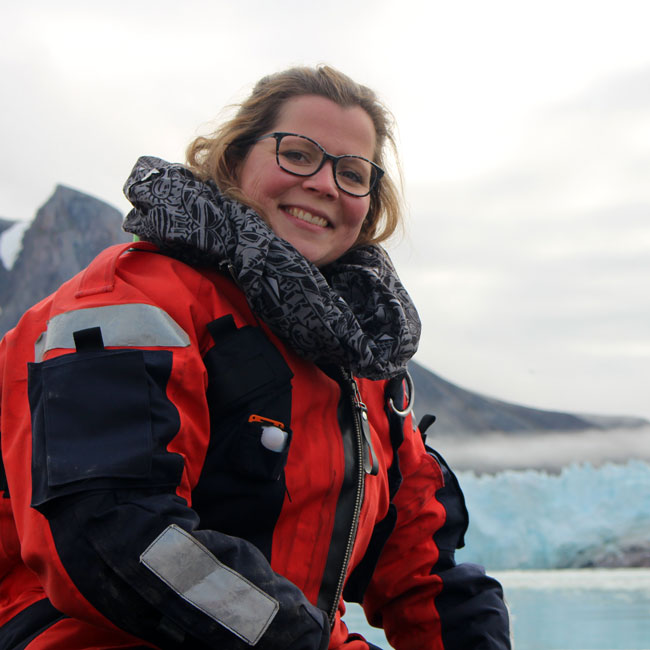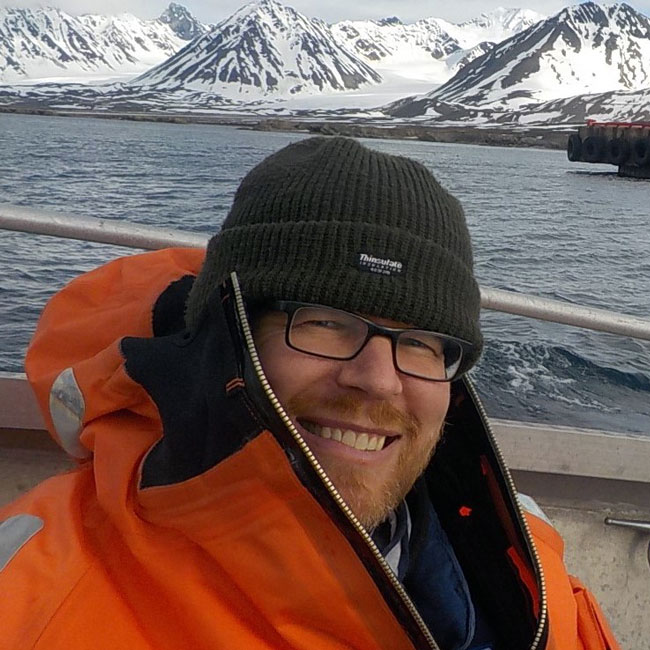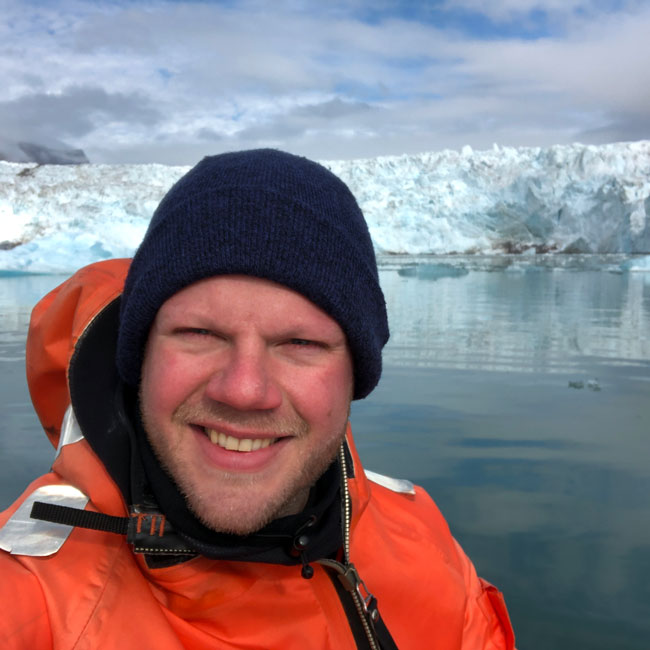The Arctic Encyclopaedia: FACE-IT contributions to a new unique book
[Published 11 August 2025]
The Arctic Economic Council launched a new book: The Arctic Encyclopaedia. This unique book presents a mosaic of Arctic experiences—defined one word at a time.
Prime Ministers, senators, artists, Indigenous youth, CEOs, and academics from across six continents have joined forces in a unique and unprecedented book about the Arctic. With contributions from more than 200 individuals across 36 countries, this book reframes how the Arctic is perceived. It offers not a single narrative but a multitude of perspectives—each author was invited to define one word that connects them to the region. Entries range from poetry and photography to essays and illustrations, capturing the cultural, economic, and emotional breadth of the Arctic.
The University of Bremen team of the FACE-IT project was among the contributors to this book project.
- Researcher Nora Diehl – “Kelp forest”
- Project Leader Kai Bischof – “Seaweed”
- Project Manager Simon Jungblut – “Fjord” and “Sea Urchin”
The book explores a wide array of themes—from adventure, aquaculture, and ambassador to mining, myth, and mental health—with entries spanning the letters A to Ø, including local words like the Faroese Ætt.
The book features entries from notable global figures, including the Prime Ministers of Norway and Greece, US Senators, an EU Commissioner, Indigenous leaders from across the Arctic, and youth who will shape the region’s future. Contributors hail from as far afield as Zimbabwe, Egypt, Japan and Australia, demonstrating the Arctic’s far-reaching relevance in a rapidly changing world.
“The Arctic is my home, but it means many things to many people,” says Mads Qvist Frederiksen, Executive Director of the Arctic Economic Council (AEC) who is behind the book. “This project doesn’t offer one definitive version of the Arctic—it lets each contributor define what the Arctic means to them. The result is a patchwork of voices and visions that together create a richer understanding of the region.”
“Two-thirds of the contributors are from the Arctic itself. But we’ve also included photographers from Costa Rica, researchers from Indonesia, and executives from Switzerland,” says Frederiksen. “This is a reminder that the Arctic is global. Climate change might be visible in the high north but the implications are everywhere. Likewise, products like fish are caught in the cold waters of the Arctic but sold at global markets.”
The Arctic Encyclopaedia is a book to be shared—in classrooms, over coffee tables, across generations. It can be read from beginning to end or opened at random. Each word offers a new insight. The online edition will be freely accessible to the public, aiming to be a resource for educators, students, policymakers, and curious minds alike.
The Arctic Encyclopaedia is published by the Arctic Economic Council (AEC), an international, pan-Arctic business organization dedicated to promoting sustainable economic development in the High North. The AEC based in Tromsø, Norway. It brings together companies—from small Arctic enterprises to global corporations—committed to responsible investment and sustainable development in the region.
The book was made possible through financial support from the European Union, the Nippon Foundation, and private contributions.
Access the book online on the homepage of the Arctic Economic Council.
Media may contact the AEC via mail.
People involved
Nora DIEHL
Role in FACE-IT:
• Researcher "Biodiversity Changes"
• Researcher "Ecosystem Function Changes"
Marine Botany, University of Bremen, Germany
ResearchGate
Nora’s FACE-IT Projects
Kai BISCHOF
Role in FACE-IT:
• Scientific Coordinator
• Member of the Executive Board
• Co-Leader "Policy Dialogue and Outreach"
• Co-Leader "Project Management"
• Leader "Ethical Requirements"
• Researcher "Biodiversity Changes"
• Researcher "Ecosystem Function Changes"
Marine Botany, University of Bremen, Germany
Center for Marine Environmental Sciences MARUM, University of Bremen, Germany
UBremen personal page
Kai’s FACE-IT Projects
Simon JUNGBLUT
Role in FACE-IT:
• Scientific Project Manager
• Member of the Executive Board
• Co-Leader "Policy Dialogue and Outreach"
• Co-Leader "Project Management"
• Researcher "Biodiversity Changes"
Marine Botany, University of Bremen, Germany
Association of Marine Sciences, Bremen
Society for Natural Sciences NWV, Bremen, Germany
UBremen personal page
ResearchGate
